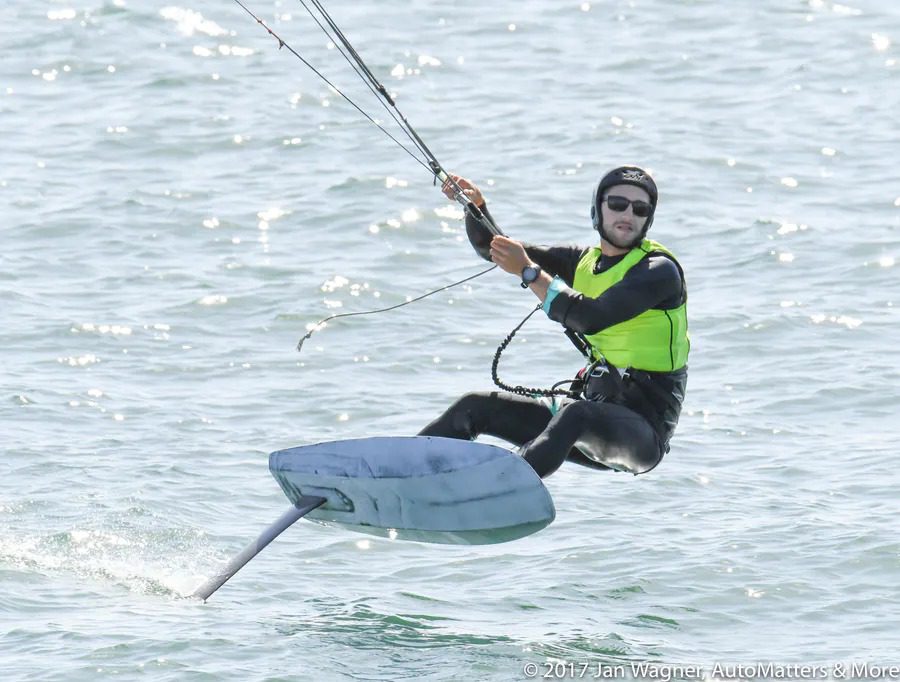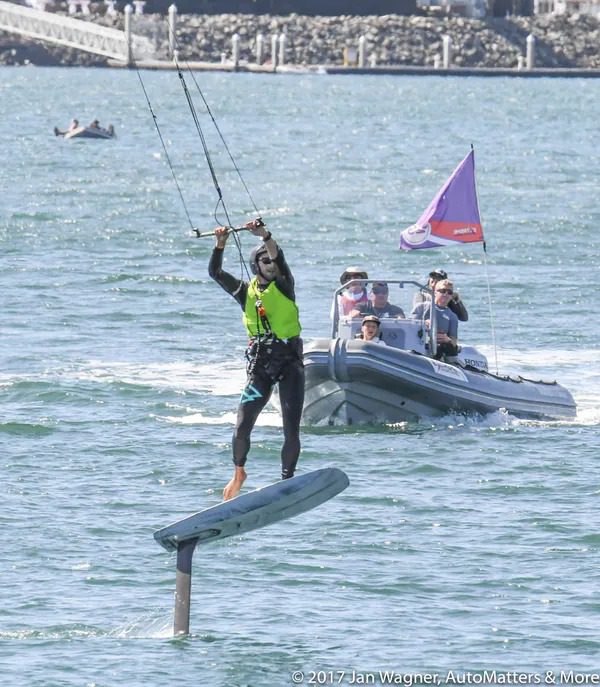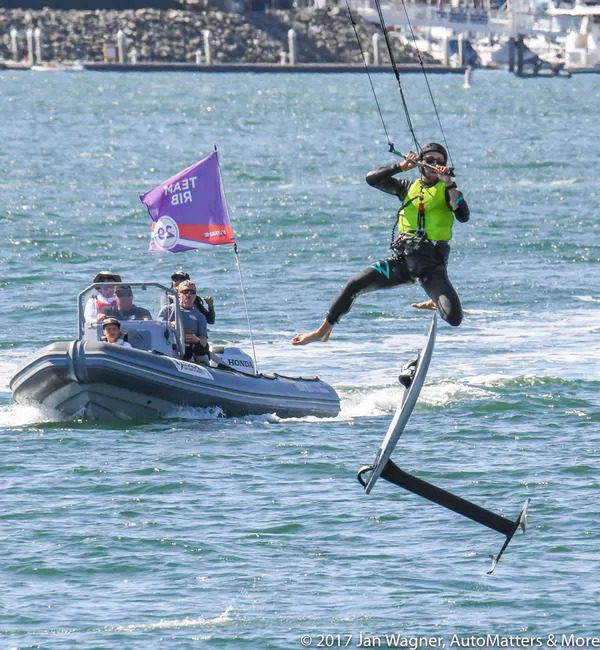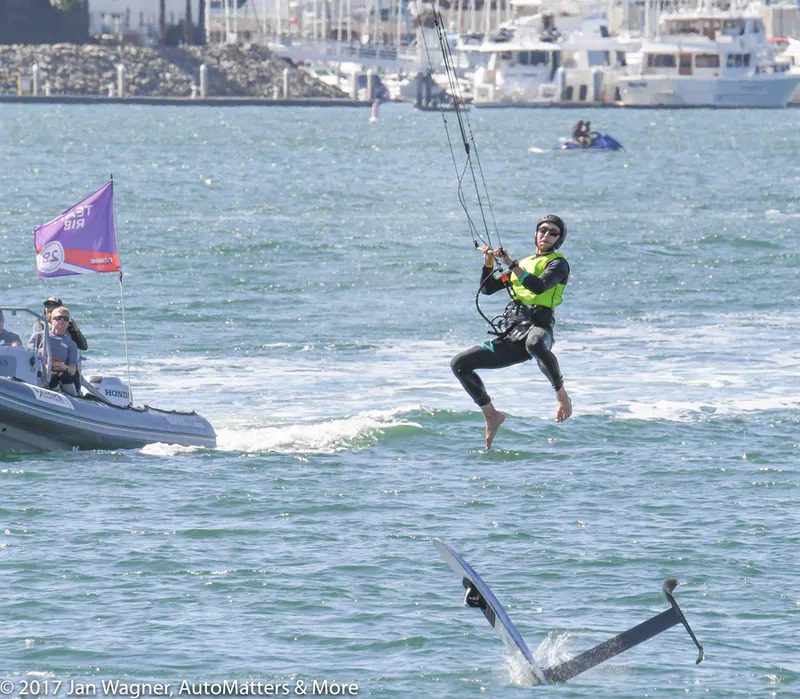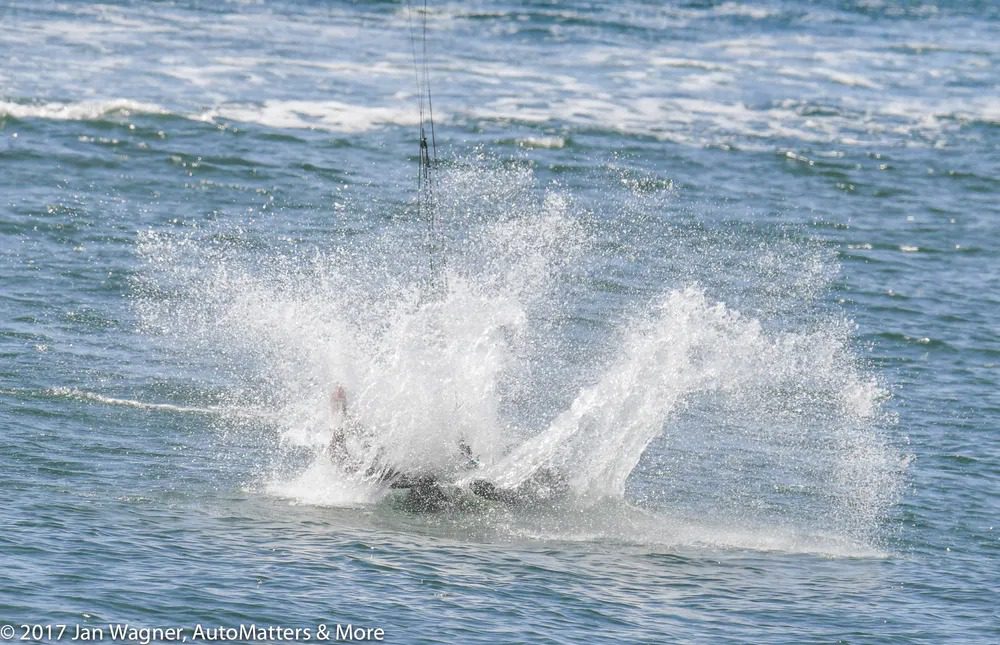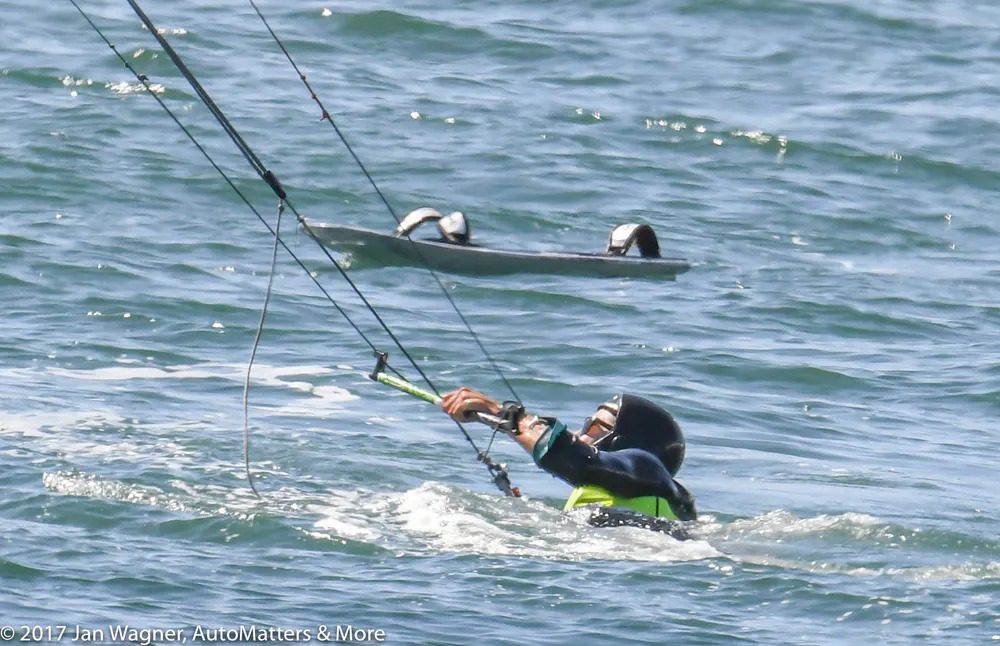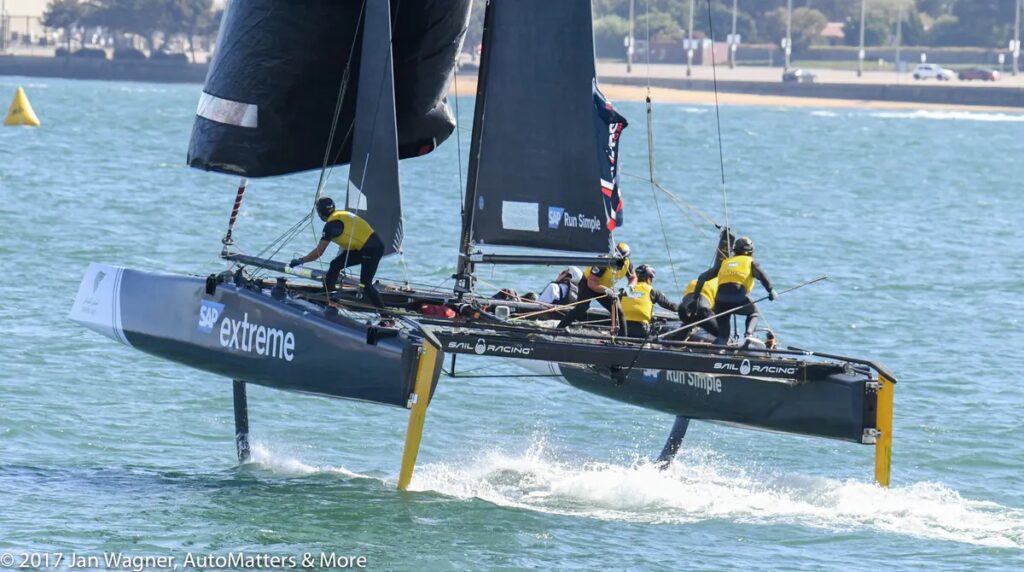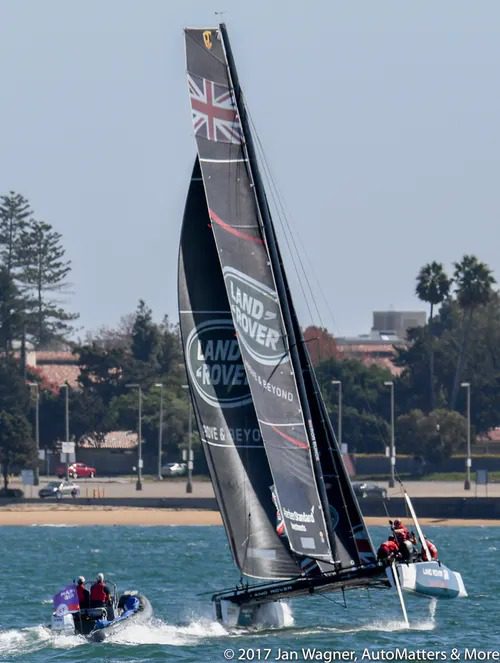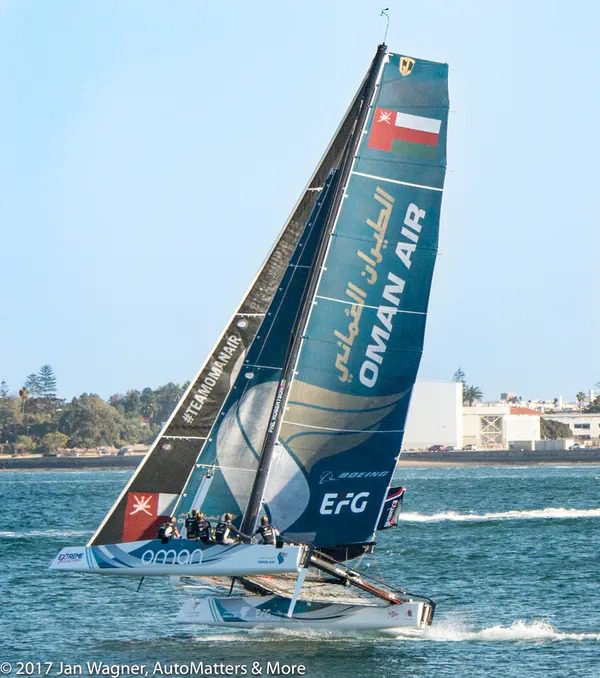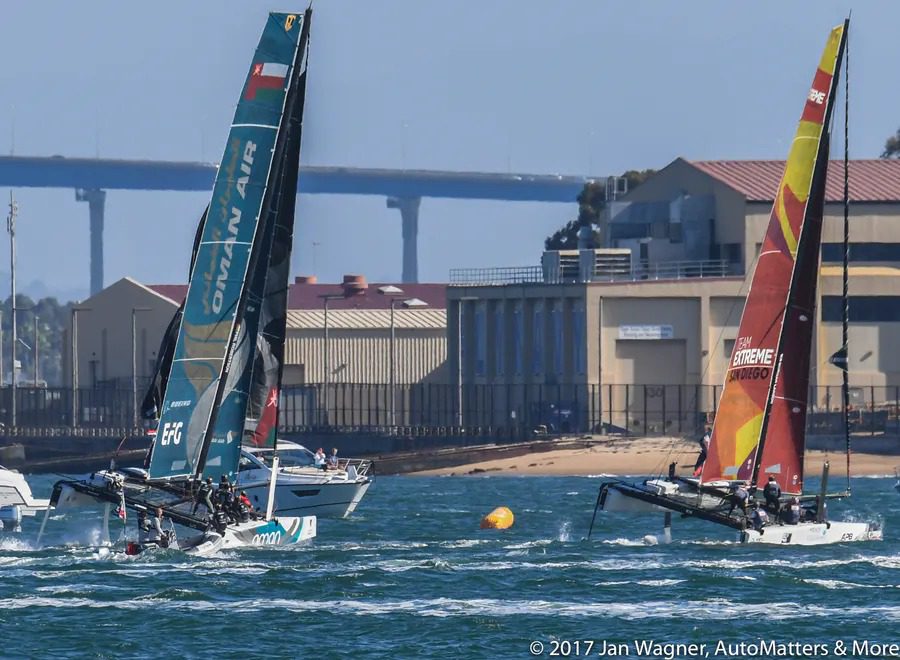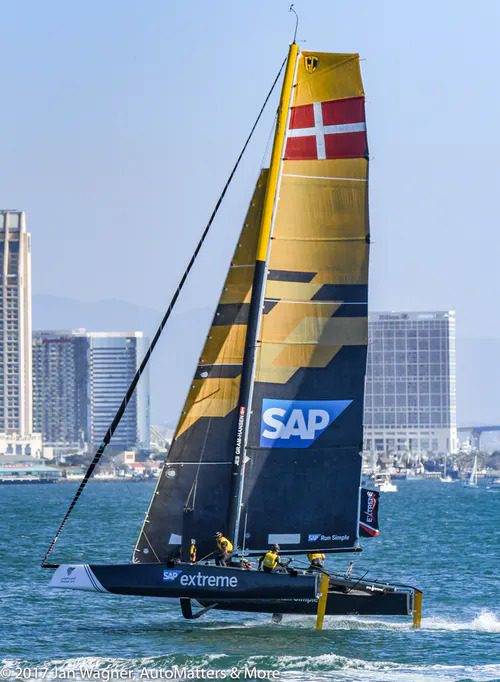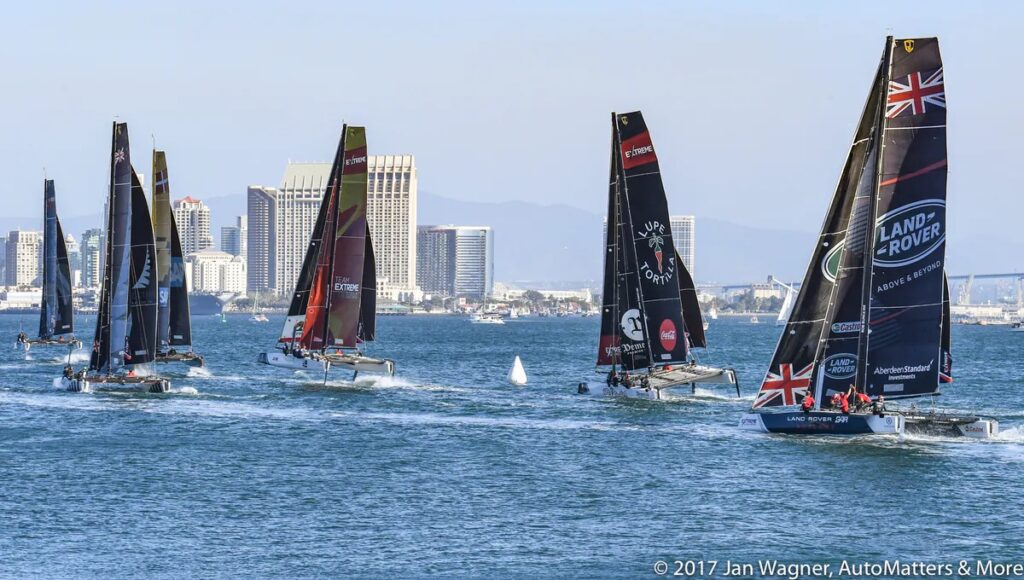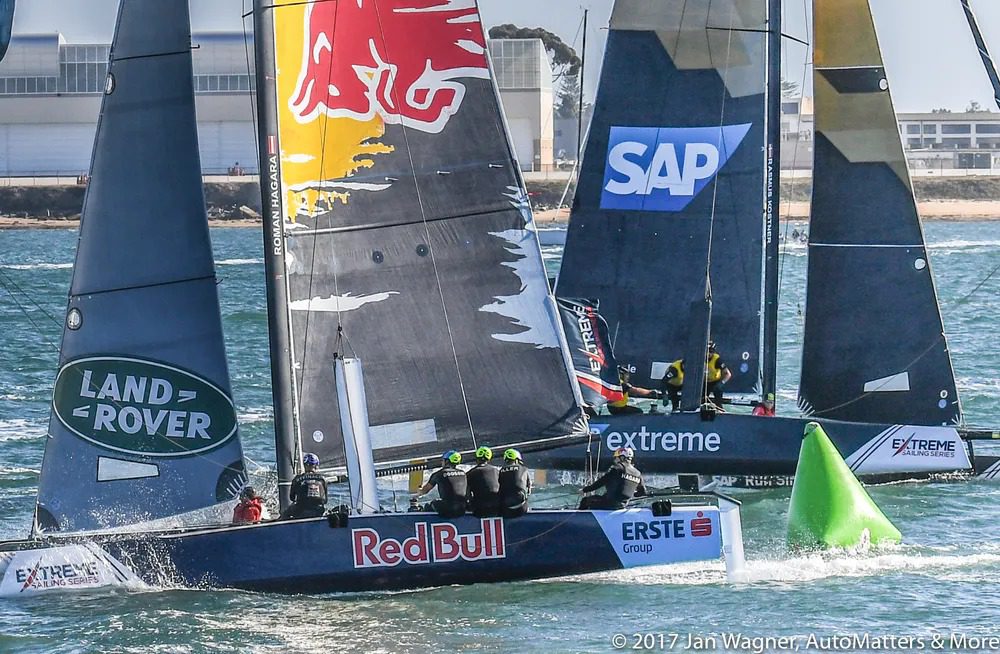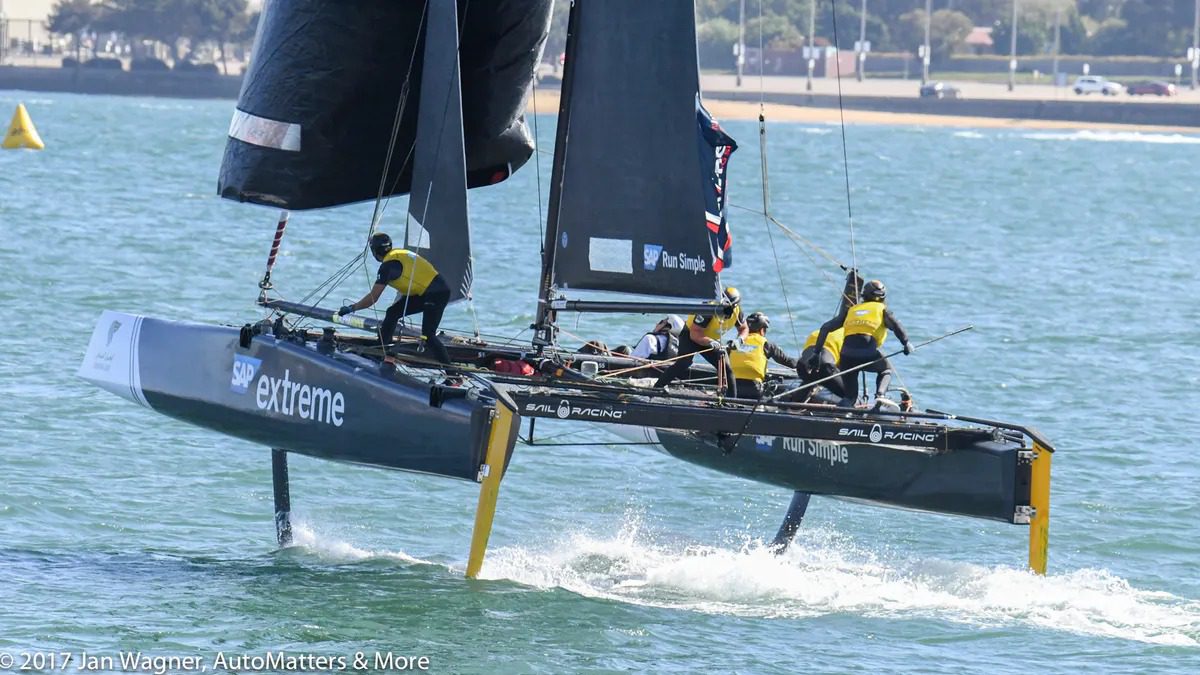
EXTREME SAILING SERIES – SAN DIEGO & THINKTANK AIRPORT NAVIGATOR
These racing catamarans almost fly!
EXTREME SAILING SERIES – ACT 7 SAN DIEGO
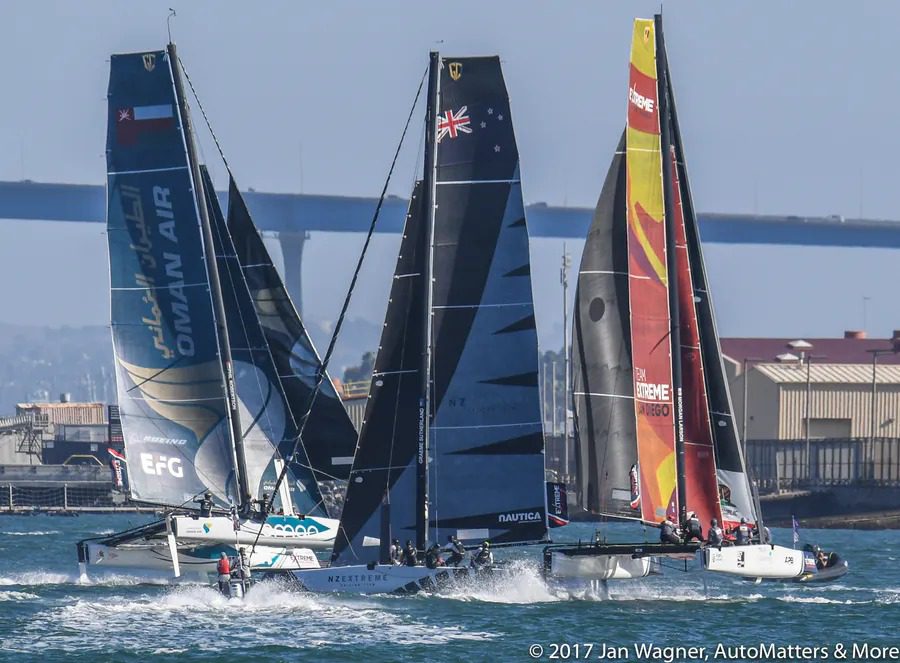
Recently the Extreme Sailing Series and the top kiteboarders in the world visited San Diego for four days of racing action, adding North America to their schedule for the first time since Boston in 2011. The event was free to the public to watch and enjoy, with shops, food trucks, exhibits and clubs.
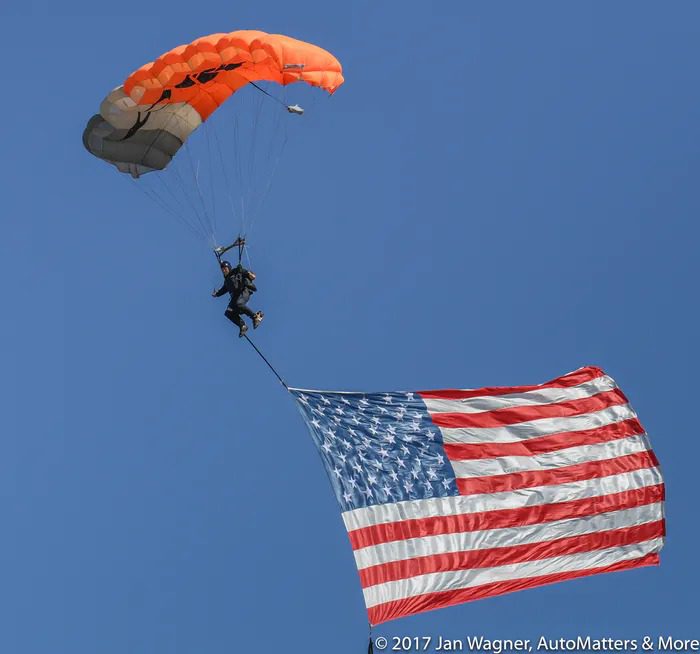
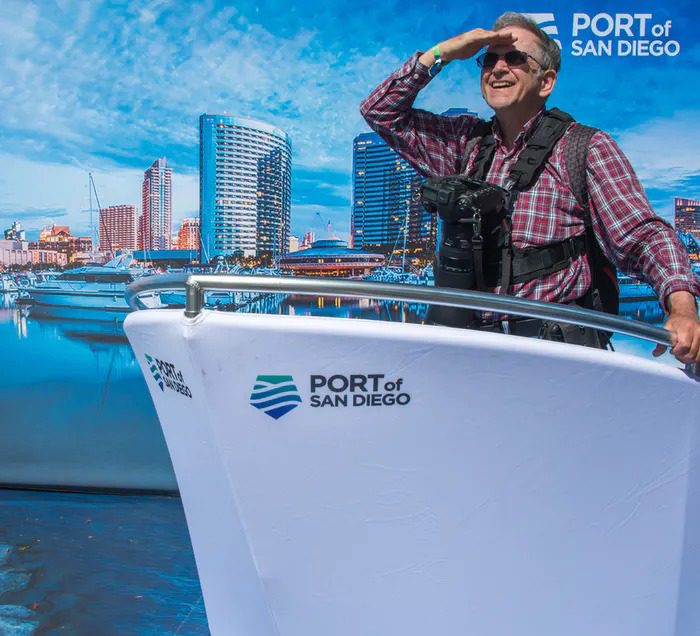

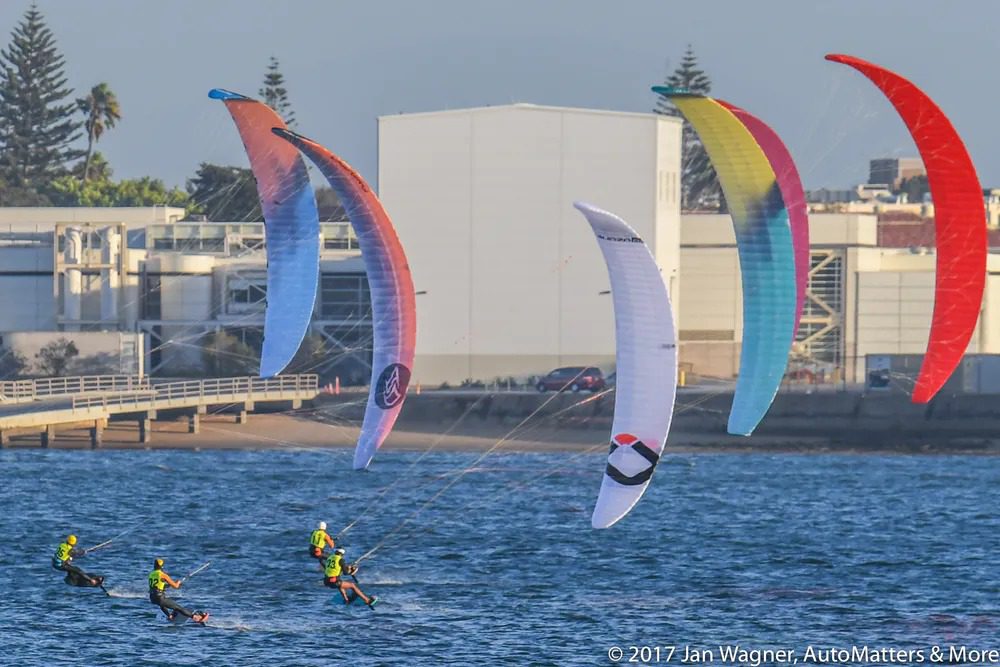

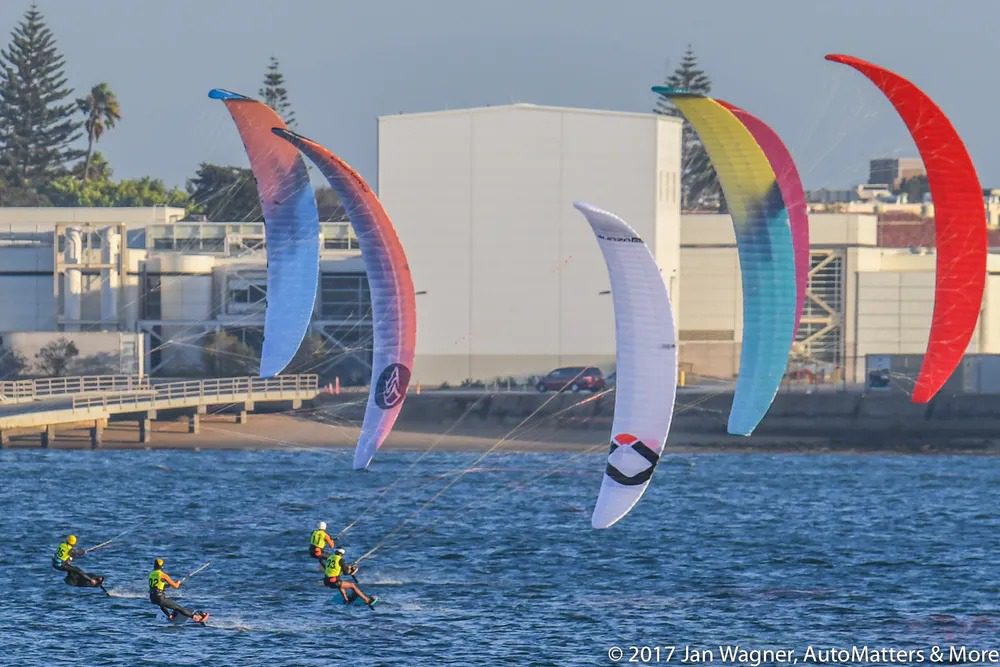
As in other forms of racing, a little specialized knowledge can add to the enjoyment of the sport.
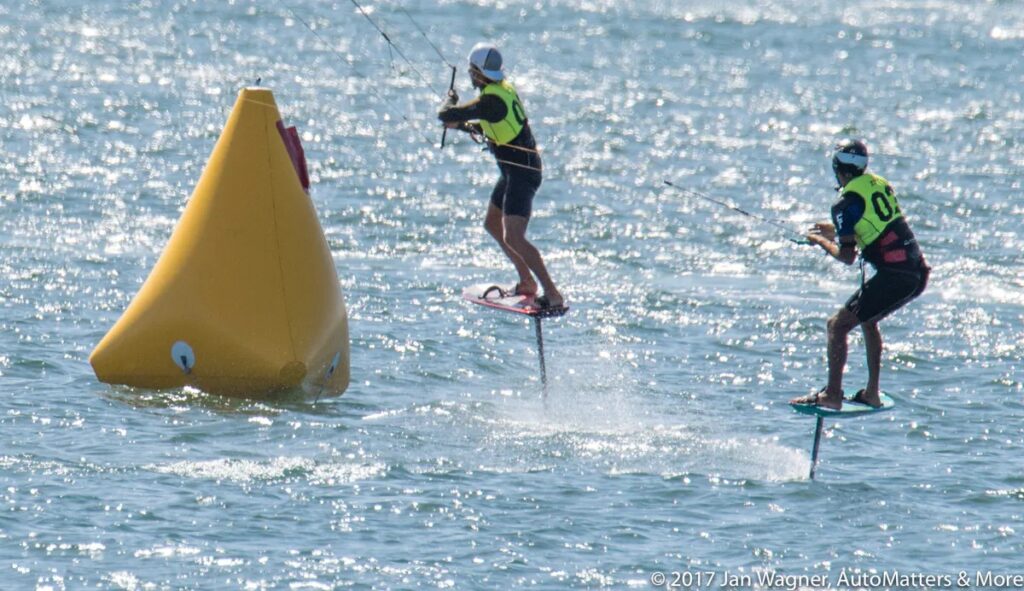
Attached to the mast are a large mainsail and two smaller foresails. The leading foresail is called the “code zero.” Its purpose is to give the boat extra power upwind and downwind. The foresail behind that is called the jib, which is used for upwind sailing.
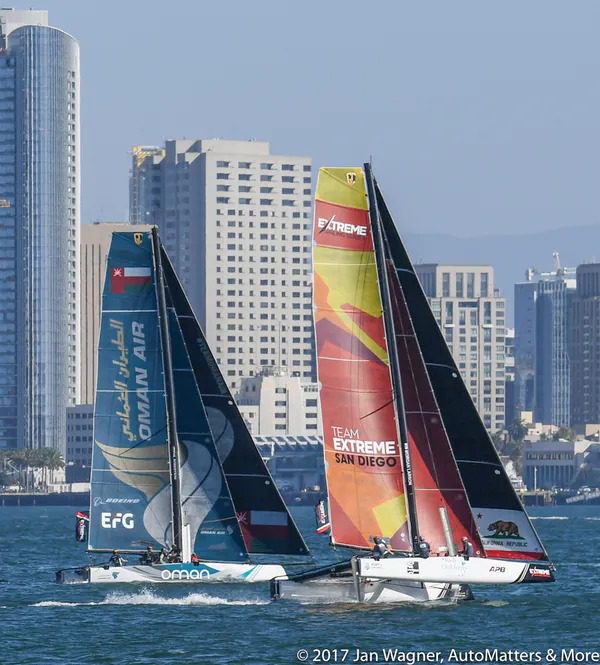

The GC32 catamarans look like they are flying over the surface of the water, as they rise up on their hydrofoils. Each of the two hulls has a J-foil in its center to create lift, and a T-foil fitted to the rudder, in the stern. These T-foils balance the lift created by the J-foils, to prevent the boats from flipping over. The hydrofoils raise the hulls up into the air, which produces far less drag than if they were passing through water. The result is greater speed.

The crew includes the helmsman, who makes split second course decisions and steers the boat; the mainsail trimmer/tactician, who fine tunes the sails to maximize performance and helps the helmsman with tactics; the headsail trimmer, who sets the jib (for upwind) and the code zero (for upwind and downwind); the foil trimmer, who uses a pulley system to adjust the foils to get the boat up out of the water; the floater/boatman, who has the challenging task of stepping in to help wherever needed; and the guest sailor, a special spot reserved for a VIP guest to experience Extreme Sailing up close and personal.
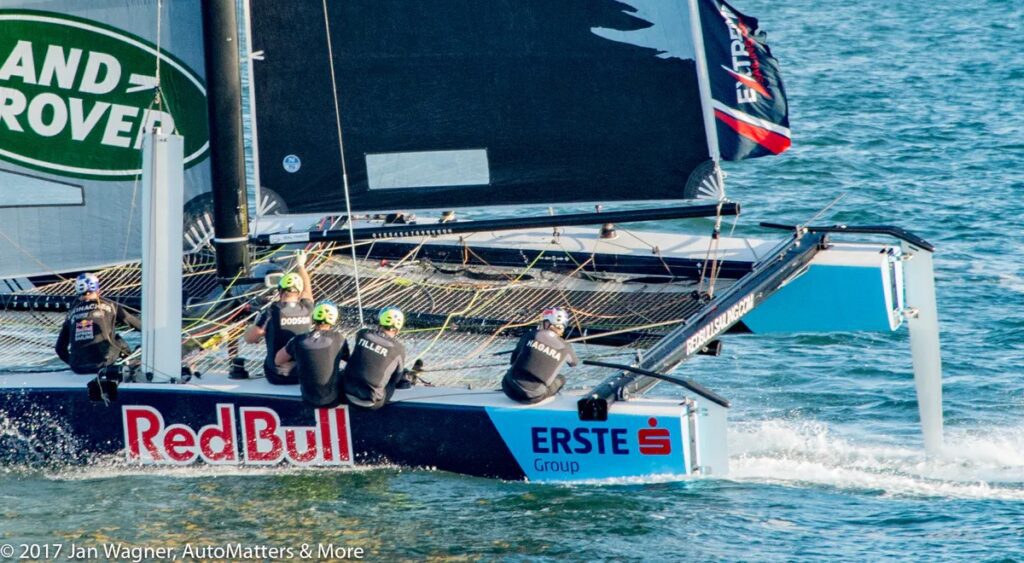

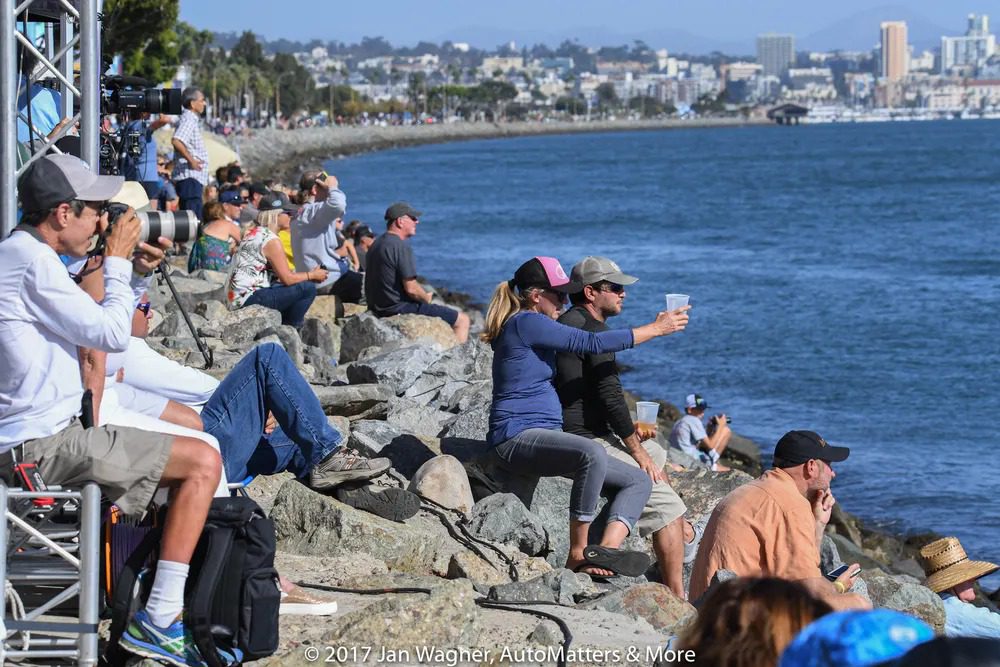

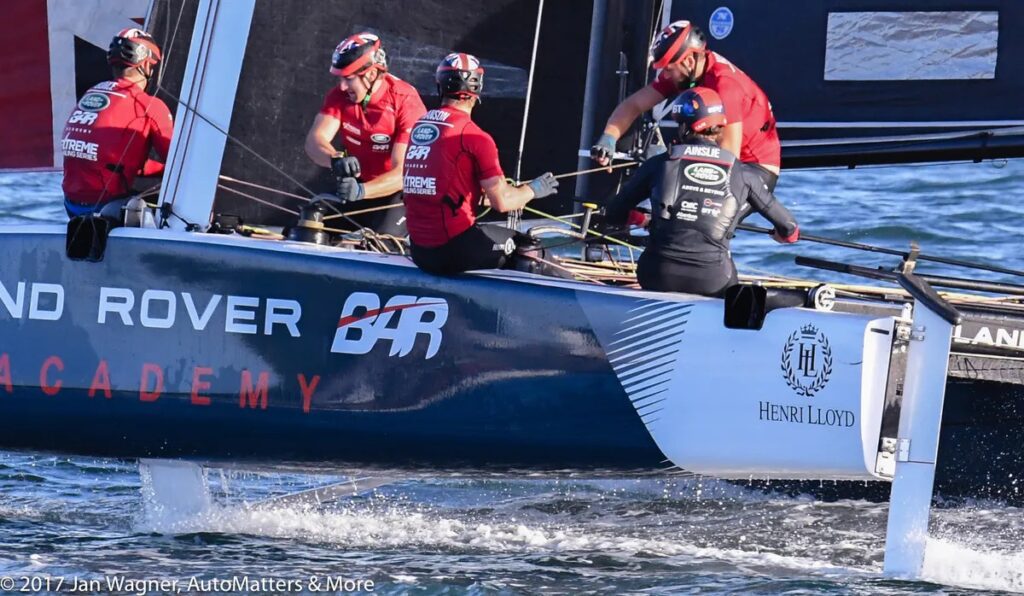
There is a great deal of strategy involved in Extreme Sailing. You’ll see that some of the boats take a different route than others, yet often the boats get very close to each other. More than once I’m pretty sure that I heard the cracking sound of boats making contact with each other.
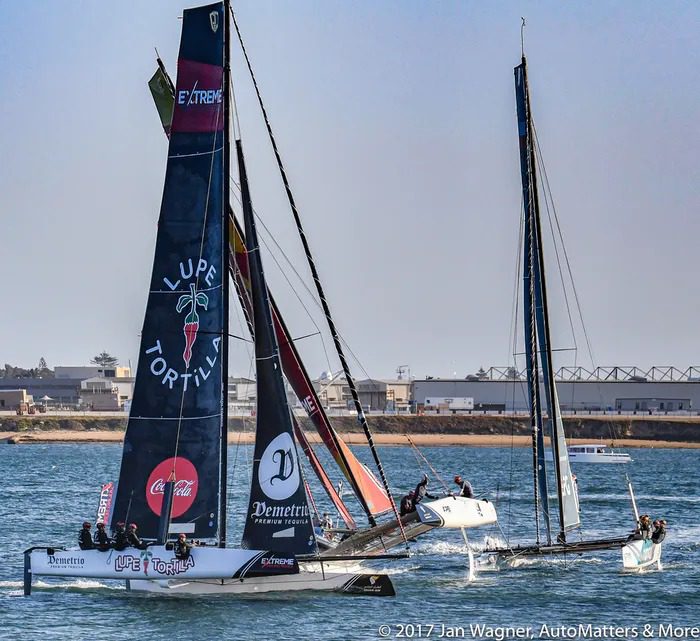
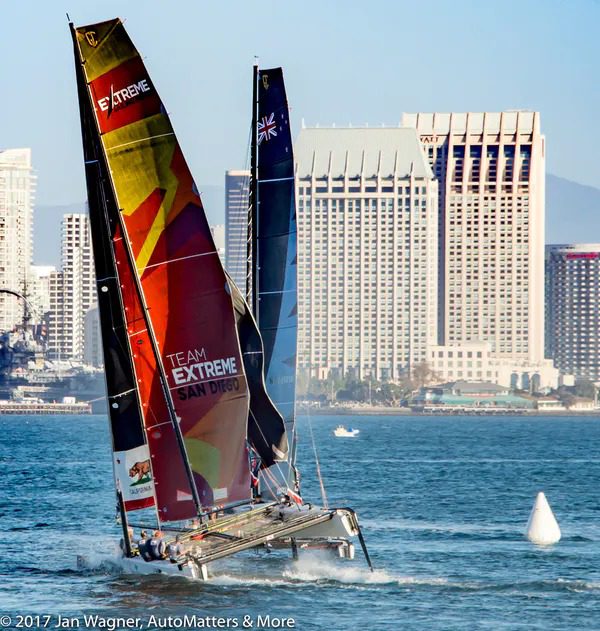

The catamarans are steered left and right, tacking back and forth through the water in a zigzag pattern to maximize the propulsive effect of the wind. To reposition the sails, each crew quickly moves from side to side along thea “trampoline” – a lightweight mesh deck that is super strong.
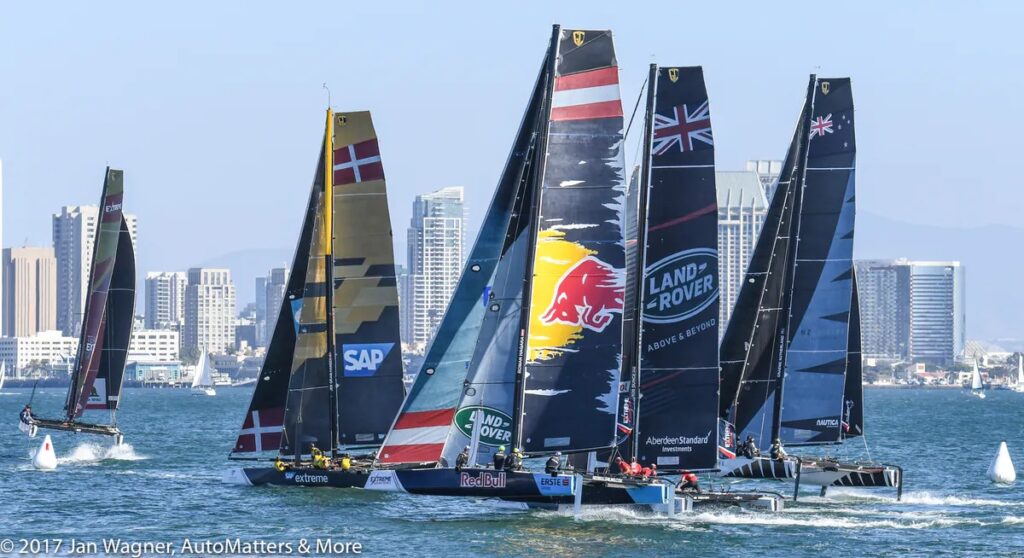

There were several exciting races each day, and the finishes were close.
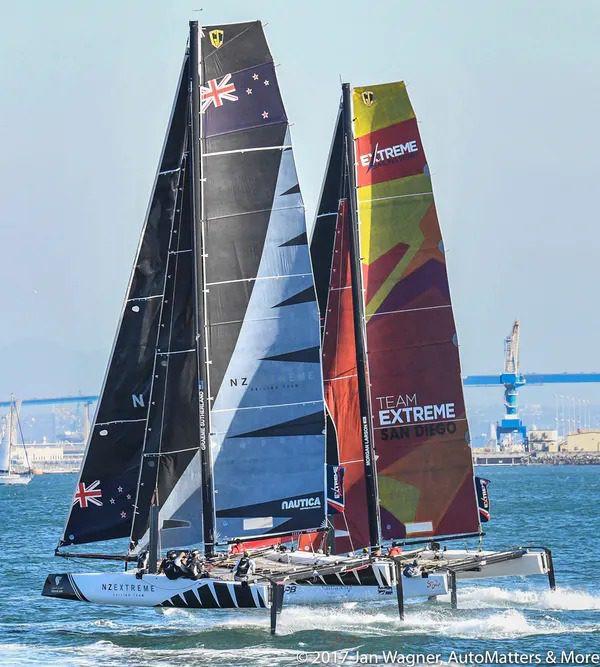
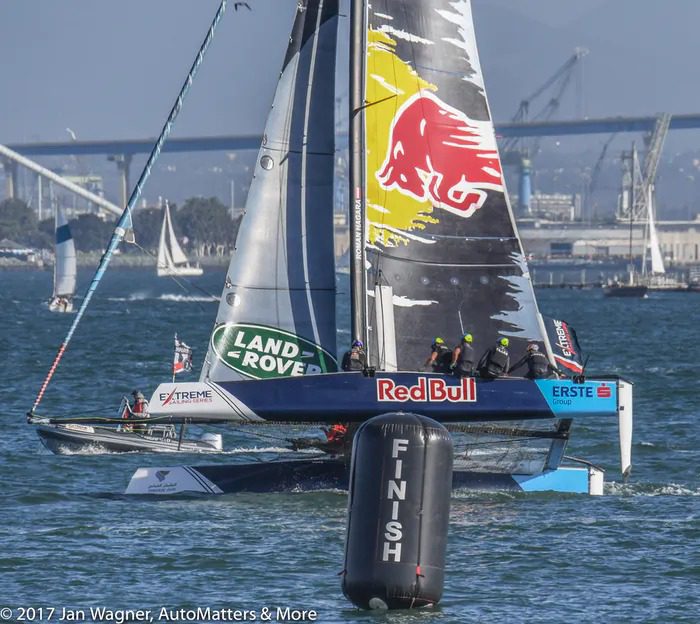
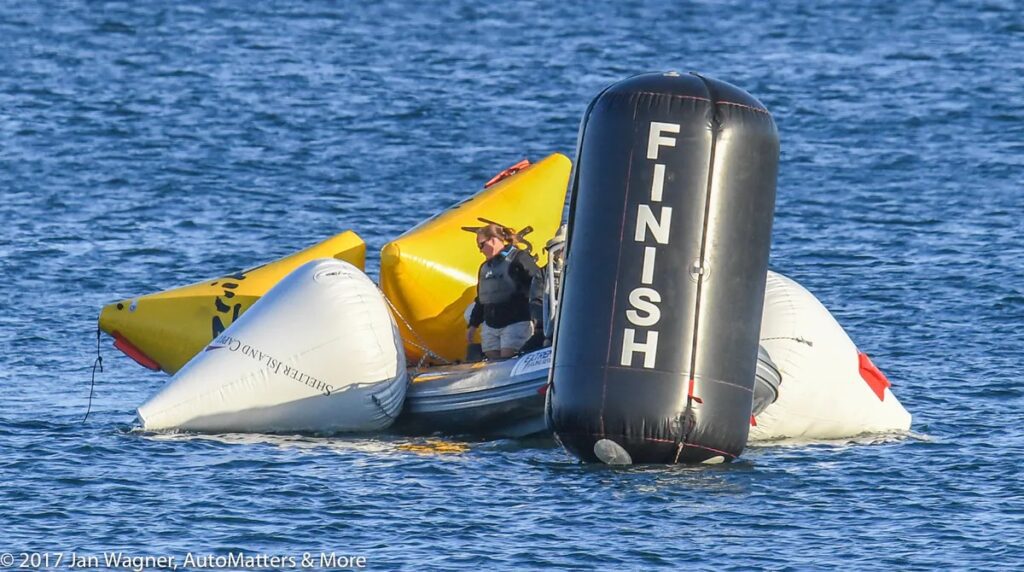
THINKTANK AIRPORT NAVIGATOR
This week we visited a major sports event. Much of the action was far away, on the water. Taking close-up photos of that required the use of a long telephoto lens. However there were also shot worthy subjects much closer. To quickly and easily go back and forth between the two, I prefer to use two cameras.
At issue is how to deal with heavy cameras and lenses over the course of a long, tiring day? You really do not want to have to carry them all the time. While typical rolling cases will certainly make this easier on you, moving the cameras in and out of them can be a pain, especially when changing shooting locations frequently.
The solution is a top-loading, well-padded, wheeled camera case. ThinkTANK sent me a sample to review.
Their carry-on sized Airport Navigator will securely hold a professional Nikon D5 DSLR with a 28-300mm lens attached, a Nikon D4S with the popular (and quite long) Tamron 150-600mm lens attached – with the lens hood reversed (a tight fit, but the zipper still closes easily), a variety of small accessories, a short lens, and a 15-inch laptop computer plus file folders in a separate padded compartment.
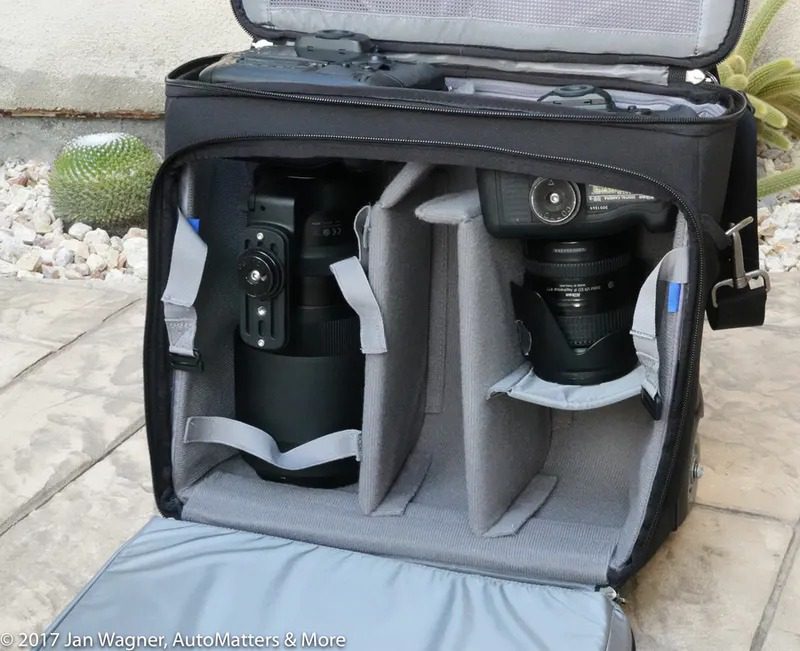
This case is top-loading and front-loading, with configurable padded dividers and a rain cover. The extendable metal handle cleverly slides through the case’s padded handle to hold the lid open for easy access. The shoulder strap is slotted, enabling it to slide over another case’s metal handle. This lets you wheel around both cases at once. The materials and quality of construction are excellent.
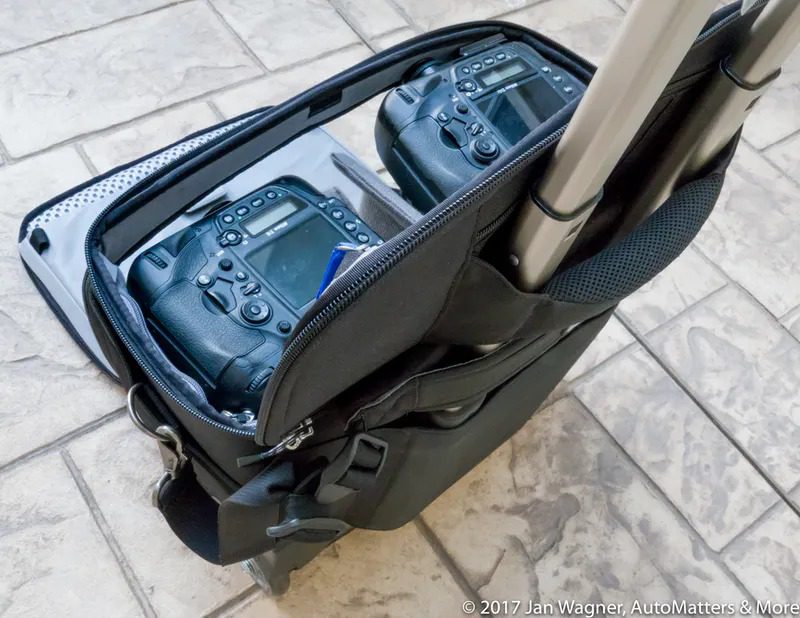
For more information, and to see photos and a video of the Airport Navigator, visit www.thinktankphoto.com. I think you’ll like it.
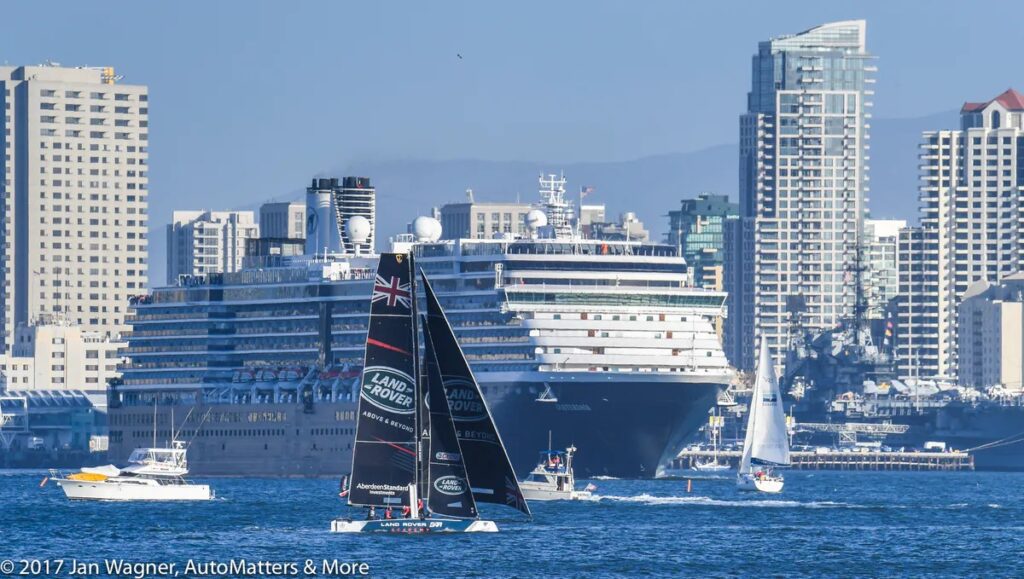
COPYRIGHT © 2017 BY JAN WAGNER – AUTOMATTERS & MORE #513R1

